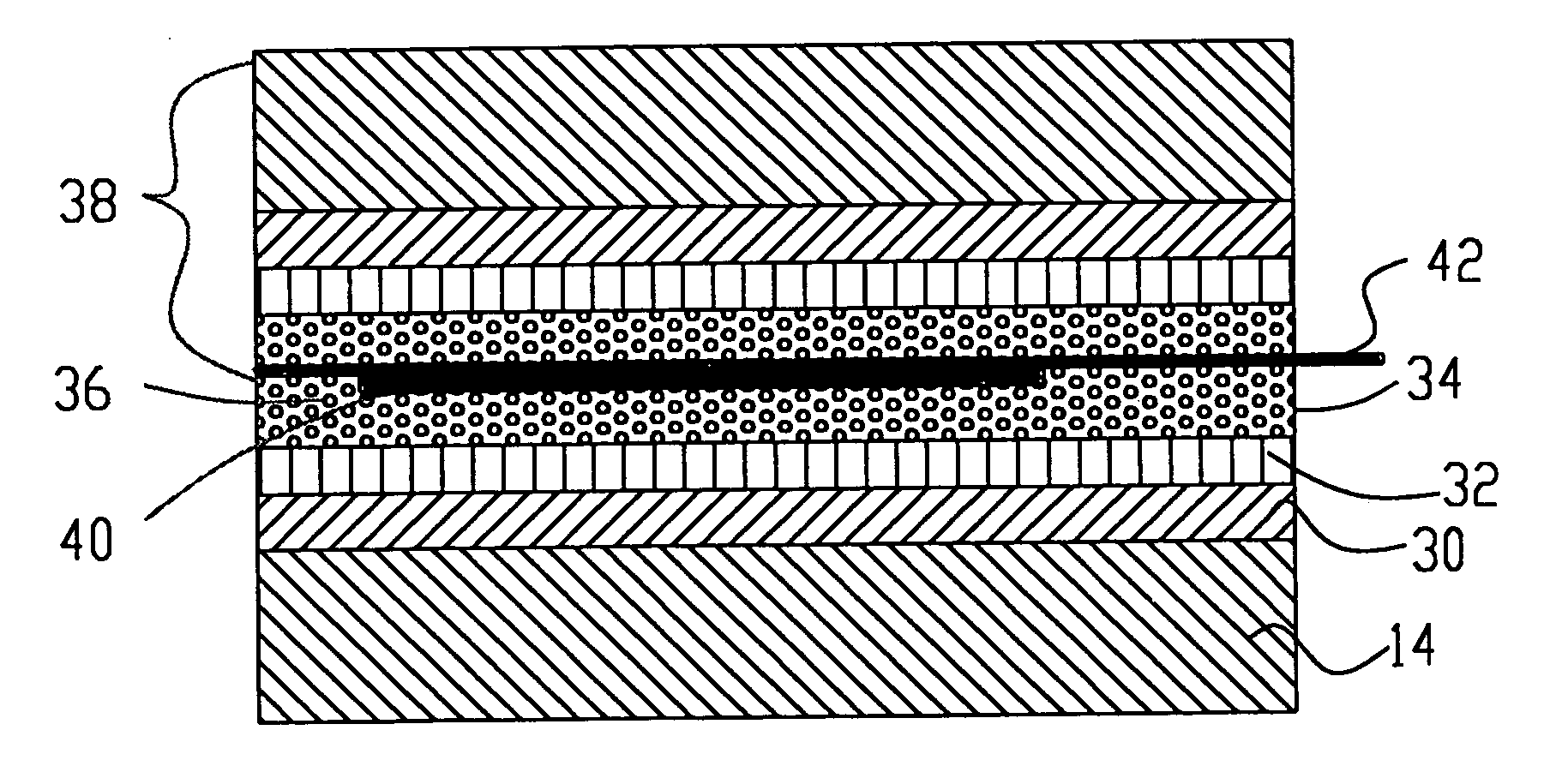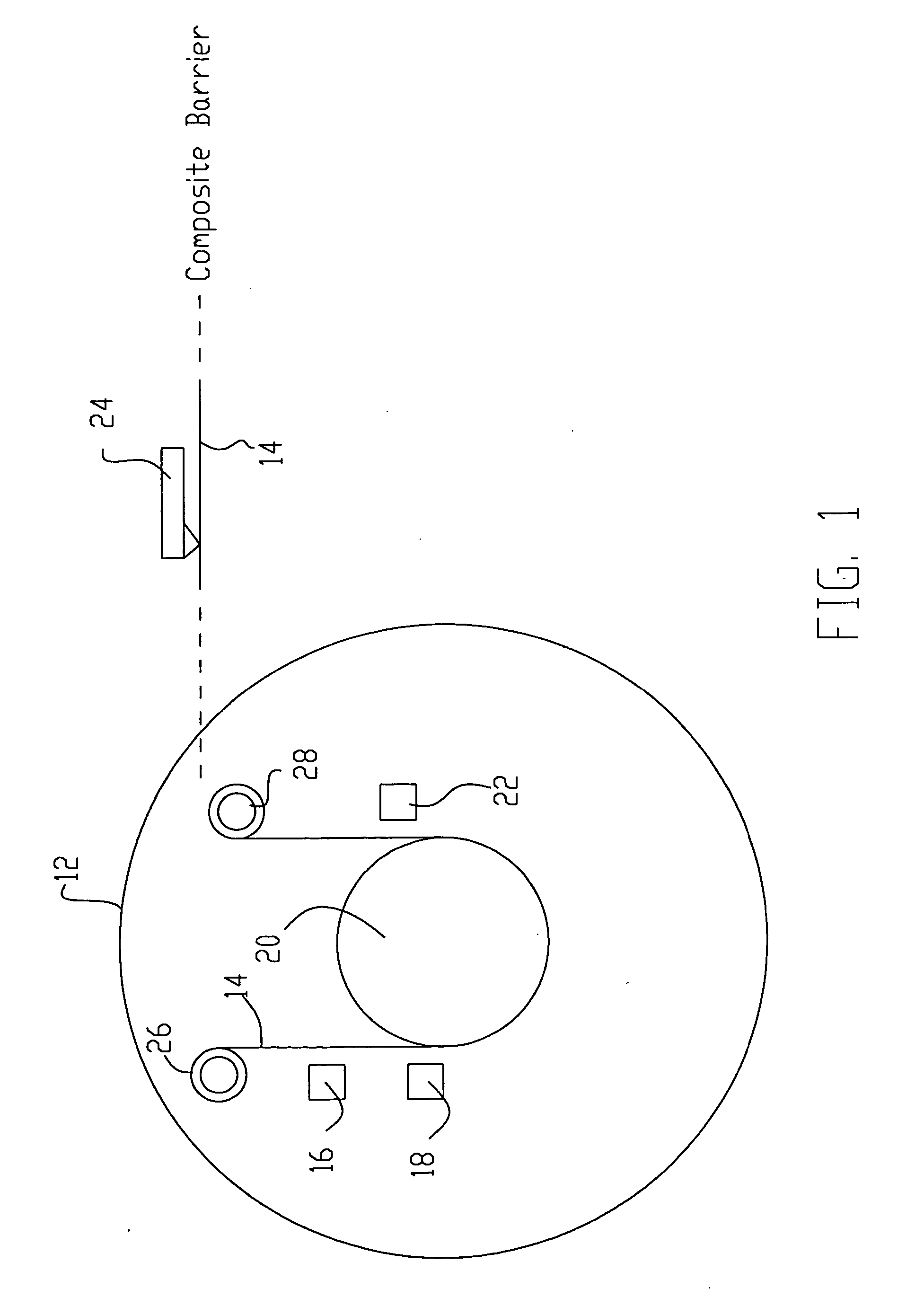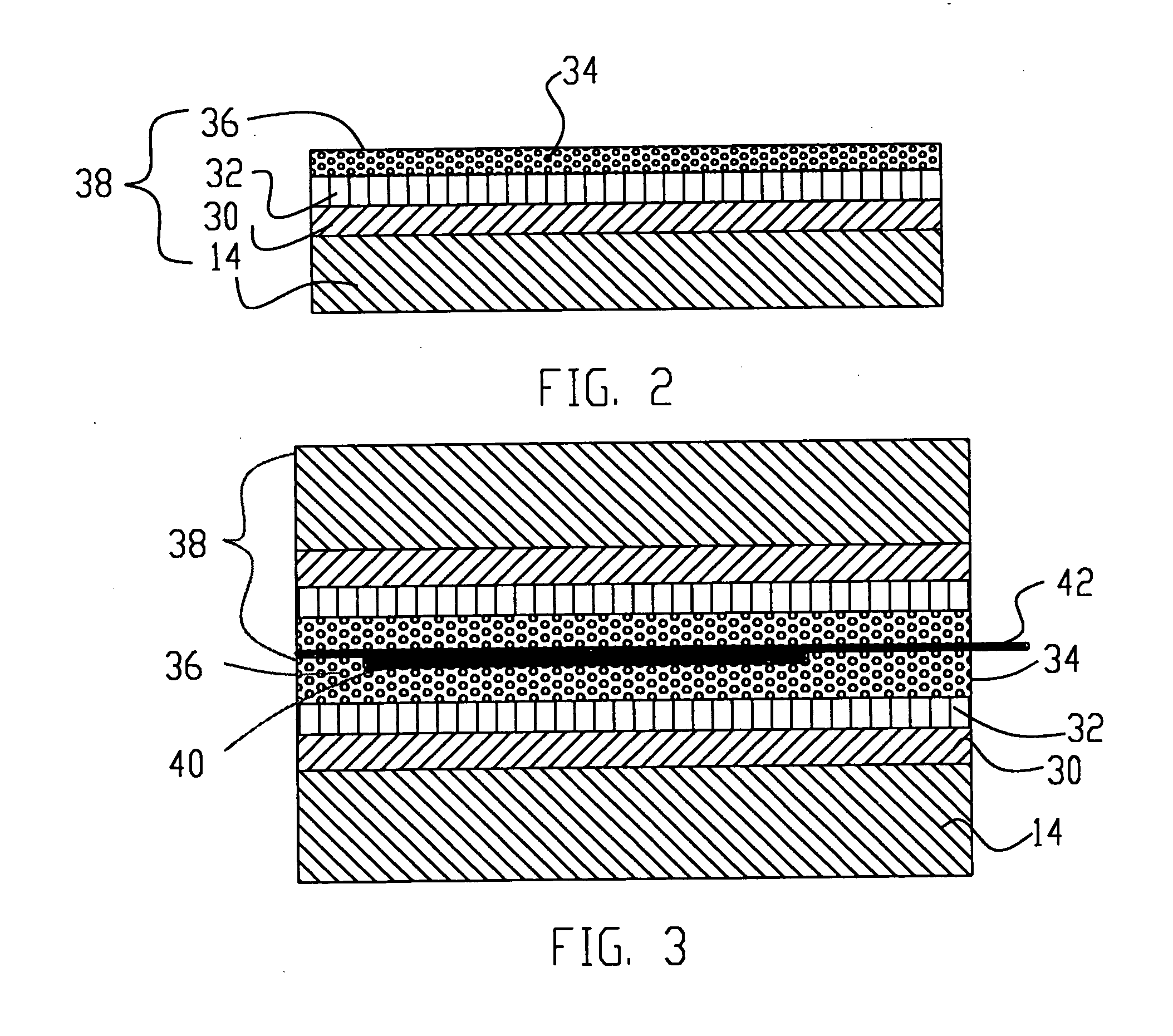Composite modular barrier structures and packages
a technology of modular barrier structure and packaging, applied in the field of multi-layer transparent flexible barrier, can solve the problems of device fabrication on a barrier layer imposing additional limitations on the barrier sheet properties, temperature and thermo-mechanical stability, etc., and achieve the effect of high barrier properties
- Summary
- Abstract
- Description
- Claims
- Application Information
AI Technical Summary
Benefits of technology
Problems solved by technology
Method used
Image
Examples
example 1
FIG. 4
[0040] An inorganic barrier layer composed of aluminum oxide was deposited by electron beam evaporation on a 15 micron thick film substrate of polyester in a vacuum deposition chamber at a vacuum level about 10−4 torr, to form a 200 angstrom of barrier film. A layer of polyvinylidene fluoride thermoplastic polymer was deposited on the aluminum oxide barrier at atmospheric pressure and the one layer barrier sheet structure was measured for moisture barrier. The structure was then laminated onto itself to form a two layer and a four layer barrier sheet. The moisture barrier of the different barrier sheets was as follows:
MVTR, 38° C.,Barrier90% RH (g / m2 / day)One Layer barrier Sheet0.3-0.4Two layer barrier sheet0.03Three layer barriersheet
example 2
[0041] An inorganic barrier layer composed of indium tin oxide was deposited by a sputtering process over a 125 micron thick film substrate of polyester in a vacuum deposition chamber at a vacuum level of 30 millitorr to form a 500-angstrom barrier film. The resulting structure was then removed from the vacuum chamber and processed at atmospheric pressure to deposit a nano-composite layer of thermoplastic polyurethane deposited over the barrier layer. The thermoplastic polyurethane resin had previously been prepared by mixing aluminum-oxide nano-particles, less than 100 nm in size, in the liquid polyurethane resin (about 10 grams of particles per 90 grams of resin) and curing the coating to produce the nano-composite laminating barrier layer. The resulting barrier produced the following moisture permeability results, alone and in multiple-layer stacks:
MVTR, 38° C.,Barrier90% RH (g / m2 / day)ITO Barrier Layer only0.206Single barrier sheet of0.10ITO / Nanocomposite layerThree Layer Barri...
example 3
FIG. 2
[0042] A 0.5-micron thick radiation-cured acrylate polymer layer was deposited in a vacuum chamber on a 50-micron thick polycarbonate film substrate at a pressure of about 5×10-4 torr. An inorganic barrier layer composed of indium tin oxide was deposited by a sputtering process over the radiation cured polymer layer in a vacuum deposition chamber at a vacuum level of 30 millitorr to form a 500-angstrom barrier film. The resulting structure was removed from the vacuum chamber and processed at atmospheric pressure to deposit a nano-composite layer of thermoplastic polyurethane polymer deposited over the barrier layer. The thermoplastic polyurethane resin had previously been prepared by mixing aluminum-oxide nano-particles, less than 100 nm in size, in the liquid polyurethane resin (about 10 grams of particles per 90 grams of resin) and curing the coating to produce the nano-composite laminating barrier layer. The moisture barrier of the resulting single and double-layer stack yi...
PUM
| Property | Measurement | Unit |
|---|---|---|
| transparency | aaaaa | aaaaa |
| diameter | aaaaa | aaaaa |
| diameter | aaaaa | aaaaa |
Abstract
Description
Claims
Application Information
 Login to View More
Login to View More - R&D
- Intellectual Property
- Life Sciences
- Materials
- Tech Scout
- Unparalleled Data Quality
- Higher Quality Content
- 60% Fewer Hallucinations
Browse by: Latest US Patents, China's latest patents, Technical Efficacy Thesaurus, Application Domain, Technology Topic, Popular Technical Reports.
© 2025 PatSnap. All rights reserved.Legal|Privacy policy|Modern Slavery Act Transparency Statement|Sitemap|About US| Contact US: help@patsnap.com



